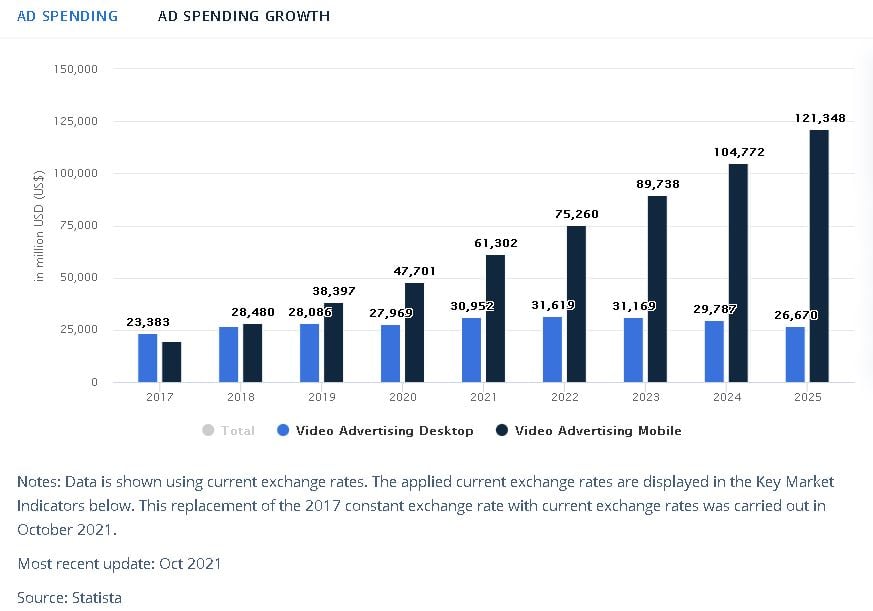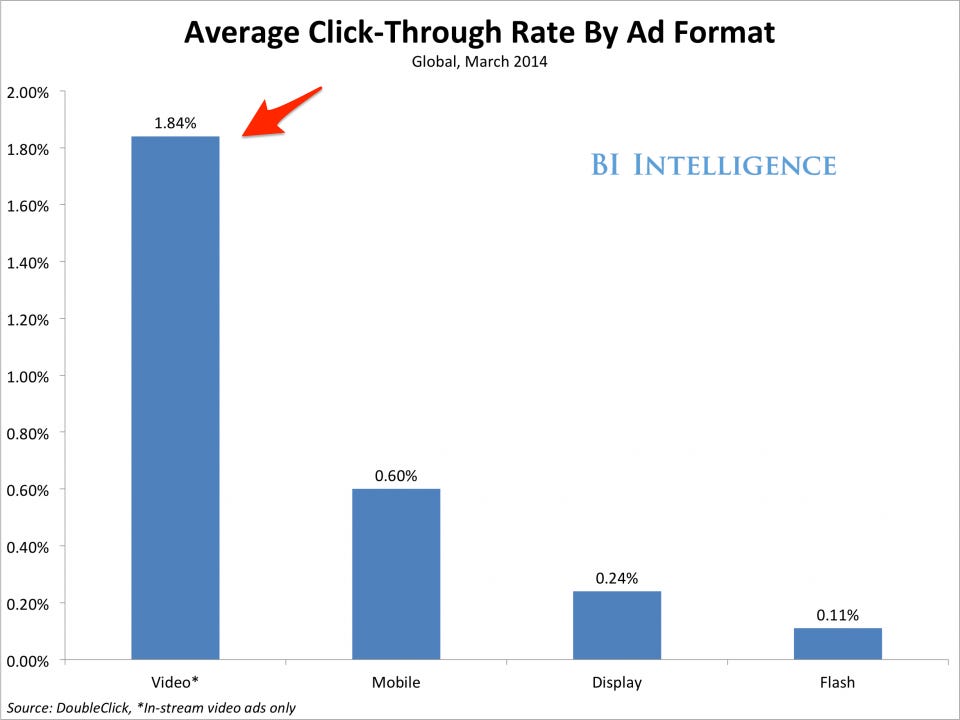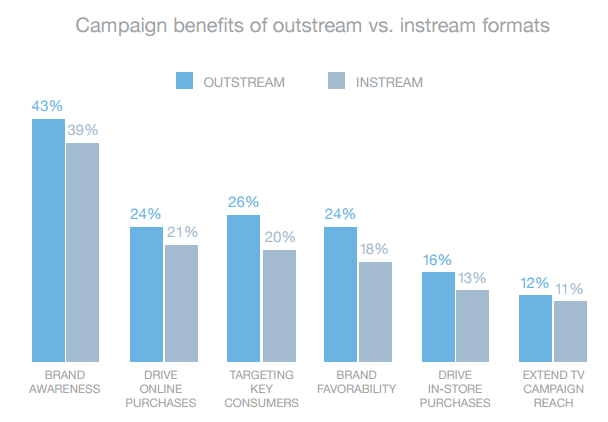Programmatic video advertising is growing at an incredible rate. It shouldn’t be a surprise. More people are watching video content, whether it’s streaming or mobile. Video ad spend in the U.S. was estimated to surpass $55 billion in 2021. The proliferation of video choices and platforms has made it more difficult for ad buyers as audiences fracture, which makes direct buying of audiences at scale complex. The solution? Programmatic video advertising, which allows ad buyers to deliver impressions across multiple channels.
Statistica projections for global video ad spend:

What Is Programmatic Video?
Programmatic video allows ad impressions of different types to be delivered using automated technology to buy ad space from multiple publishers, channels, and platforms in real time. Real-time bidding (RTB) and selling, fueled by machine learning and algorithms, coordinate between demand-side platforms (DSPs) that place buys for advertisers and supply-side platforms (SSP) that sell video inventory for publishers.
AI manages the real-time bidding (RTB) process. Here’s an example. As a visitor loads a web page, for example, the SSP shows an available inventory unit. DSPs find the highest bidder and best fit in micro-seconds, confirm the sale, and deliver the ad. While the programmatic video is also delivered in other ways, this is the most common method used for online sites.
Programmatic Ad Buying Continues to Expand
Programmatic advertising in total is forecast to continue its upward momentum to reach nearly $100 billion in spending in 2022 — a 46% increase from 2020 spending. That’s reflected in how marketers are shifting their ad dollars. Marketers, brand, and agency media planners, and buyers surveyed report that 54% of their ad spending is now going into programmatic.
Today, roughly three-quarters of all advertising is being bought using programmatic transactions. Rather than going directly to publishers, marketers are bypassing traditional media buying and going into the programmatic marketplace to place their buys.
Because programmatic buying allows impressions to be served on multiple sites and platforms, it becomes a one-stop-shopping experience for video. This makes it easier for buyers to place orders without having to negotiate with multiple publishers.
Take a look at what’s happening in the mobile space. Mobile programmatic video advertising now accounts for more than 87% of total mobile ad spending. As 5G rolls out, mobile video viewing and advertising should only accelerate.
You can also look at Connected TV (CTV). After spending grew by 36% in 2020, CTV impressions are forecast to grow another 54% in 2021. CTV and over-the-top (OTT) platforms are starting to reach critical mass, which allows for even more opportunities to place video ads. While CTV and OTT had to be bought separately in the past, programmatic buys are now being made that include both CTV and OTT together.
Key Reasons Programmatic Video Advertising is Growing
There are two main reasons why video programmatic advertising continues to grow so significantly:
- It’s easier to buy and manage.
- It reaches people the way they consume video.
- Programmatic ads can be highly targeted and personalized
Easier to Buy and Manage
Buying through platforms rather than people makes the entire process faster and cheaper. It takes less time for agencies to navigate platforms and get exactly what they want, rather than the traditional back-and-forth between buyers and sellers that often take multiple rounds.
Programmatic advertising also allows buyers to spread ad dollars across multiple channels and platforms with a single buy. There’s no need to negotiate with dozens or hundreds of individual publishers to reach the audience you want, as bots and algorithms do all the work to find the best match.
Ad targeting options have improved dramatically in the past couple of years — partly because technology has improved and partly because programmatic now provides a large enough audience delivery to reach targeted audiences.
Programmatic also significantly reduces the amount of time it takes for the handling of materials. In a traditional setting, buyers had to navigate multiple delivery systems to ensure advertising content got to multiple publishers or channels.
Programmatic also allows for more consolidated billing. Using a programmatic platform, for example, your ads may show in multiple places but you’ll still only get one bill. This saves time in the reconciliation process, but it also saves time in consolidating reporting and measuring delivery.
Even if you are buying multiple video programmatic platforms or using programmatic tools to place buys on multiple channels or multiple publishers, it’s simply an easier process. In today’s era where agencies have reduced staff, may be working remotely, and have layered more work on team members, programmatic reduces much of the friction in the buying process to save time.
Reaches People the Way They Consume Video
Programmatic video advertising also reaches people how they are watching video. As technology advances, consumption patterns have changed dramatically. Programmatic is improving the reach by providing advertisers with a way to insert video into additional spaces.
While you can’t buy ad time on Netflix currently, you can buy video programmatic on an ever-growing number of streaming channels, platforms, and websites. As viewing habits continue to evolve from broadcast and cable TV, cross-platform ad delivery will become even more important for buyers. It becomes even less important where the ad impression runs as long as it’s a quality placement and reaches the target audience expected.
It's clear consumers are comfortable engaging with the various programmatic video ad types, as CTR numbers for video ads crush other ad formats.

Programmatic Video Ads can be Personally Relevant
Machine Learning and automation can absorb vast amounts of granular data in real time, including personal behavior and histories of each person visiting a site, and the context within which they are visiting it. Combing that level of targeting, with the emotional and sensory engagement of video is a powerful combination.
Other Benefits of Video Programmatic Ads
Other benefits make programmatic video advertising attractive to marketers. Besides being able to buy cross-platform and reach highly targeted audiences, it’s much easier to tweak campaigns. You can make changes to buys rapidly, even mid-campaign.
More sophisticated programmatic platforms will allow you to A/B test ad content and placement to optimize performance and create better ROI.
You also have a variety of options available for delivering ad impressions. Pre-rolls, mid-rolls, post-rolls, out-stream, and in-display ads have all increased placement opportunities.
Types of Video Ads
In-Stream Ads Definition
In-stream ads are placed before, during, or after the video content a user has chosen to see, Linear in-stream ads will interrupt or pre-empt the primary video content, and are referred to as pre-roll ads, mid-roll ads, or post-roll ads. Non-linear in-stream ads are on screen while the video continues to play, and they generally take up a small portion of the screen.
Out-Stream Ads Definition
Out-Stream video ads don’t require video players to run, and may appear within editorial content, within a display ad, or in a feed such as Facebook muted autoplay video ads. They can also move to a smaller window to continue playing while you scroll through an article.
Out-stream ads are sometimes referred to as native video ads, in-read video ads, or in-stream video ads. In-banner video ads are a form of out-stream ad that runs video within a banner ad.
Out-stream ads are relatively new but growing more popular each year. Data from Teads suggest that out-stream performs better across many metrics.
In-Display Ads Definition
According to Google, in-display video ads are a form of YouTube ads that can be seen in Google search ads results, the related videos sidebar on YouTube, and across the Google Display Network (GDN).
More video ad formats are available as well, including interactive components that accompany videos to enhance effectiveness.
Programmatic Video Will Continue to Grow
Once Walmart jumps into the fray, you know something has gone mainstream. It’s not just the buy-side that Walmart is utilizing either. The world’s largest retailer is opening up its demand-side platform (DSP) to let advertisers programmatically target brands online and in-store. Kroger, Target, and CVS have also begun offering programmatic inventory.
With the deprecation of the cookie for tracking consumers online, programmatic offers a way to take advantage of advanced targeting using both first-party and third-party data.
Are you running video ads on your site? If you run video ads, you need an anti-adblock solution that is built to recover high-CPM ad revenue. No other vendor recovers blocked revenue like Admiral, particularly for video ads. Get a demo today to find out why Admiral is the best platform to drive ARPU and RPM across your site.





